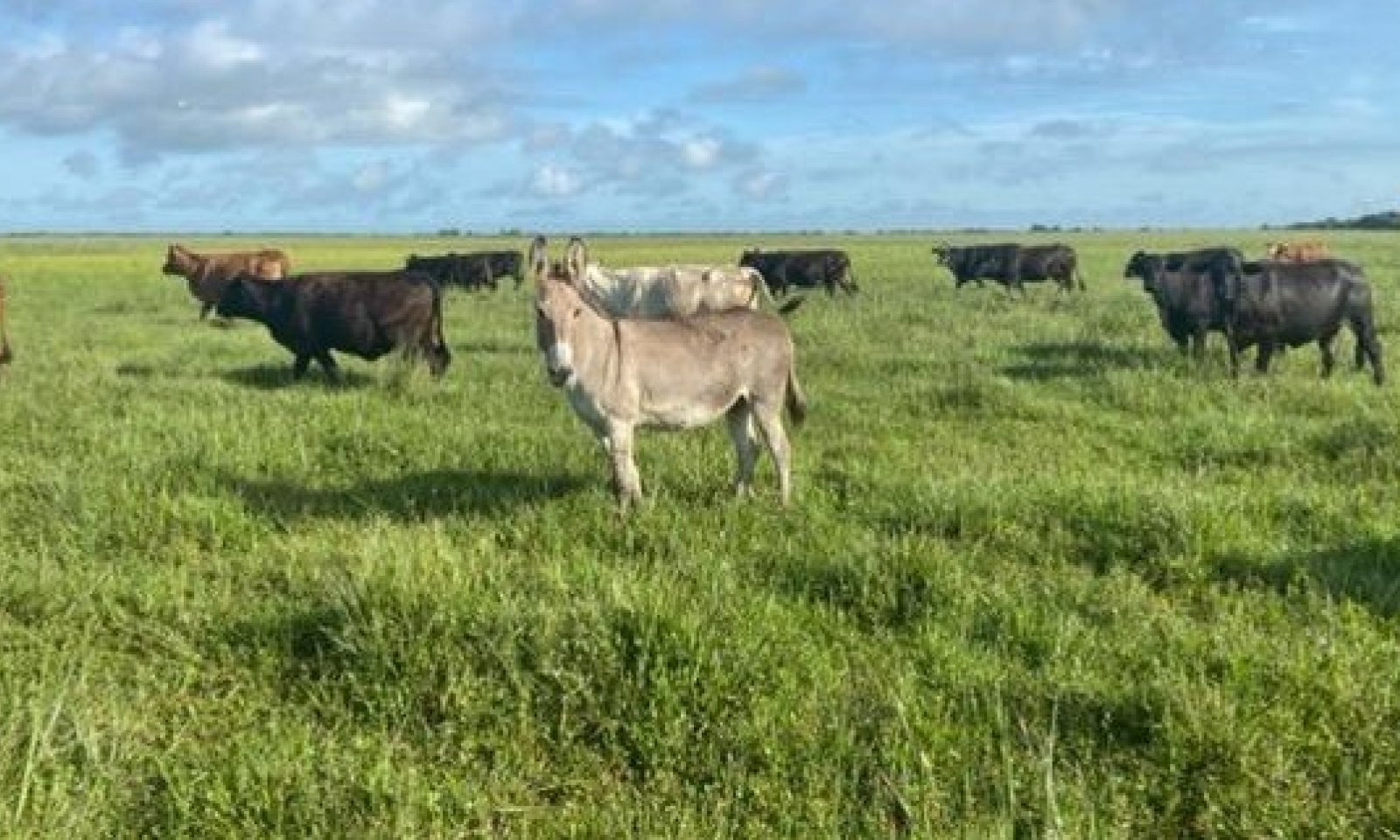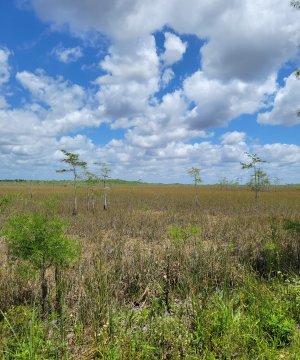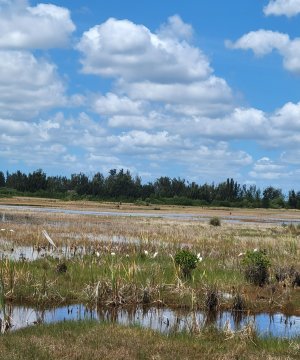
Subtropical Freshwater Non-Forested Wetlands of Big Cypress
Scenario model
Current ecosystem state
Select a state
Management practices/drivers
Select a transition or restoration pathway
-
Transition T1A
Increase in Long Term Hydroperiod
More details -
Transition T1B
Invasion of Non-Native / Exotic Species
More details -
Transition T1C
Decrease in Localized Long Term Hydroperiod and Modify for Desired Land Use
More details -
Transition T1D
Decrease in Localized Long Term Hydroperiod and Human Alteration / Transportation of Soil Materials
More details -
Transition T2A
Decrease in Long Term Hydroperiod
More details -
Transition T2B
Invasion of Non-Native / Exotic Species
More details -
Transition T2C
Decrease in Localized Long Term Hydroperiod and Modify for Desired Land Use
More details -
Transition T2D
Decrease in Localized Long Term Hydroperiod and Human Alteration / Transportation of Soil Materials
More details -
Restoration pathway R3A
Mechanical / Biological / Chemical Removal of Undesirable Species
More details -
Restoration pathway R3B
Mechanical / Biological / Chemical Removal of Undesirable Species
More details -
Restoration pathway R3C
Mechanical / Biological / Chemical Removal of Undesirable Species
More details -
Transition T3A
Decrease in Localized Long Term Hydroperiod and Human Alteration / Transportation of Soil Materials
More details -
Restoration pathway R4A
Landscape and Habitat Restoration
More details -
Restoration pathway R4B
Landscape and Habitat Restoration
More details -
Transition T4A
Invasion of Non-Native / Exotic Species
More details -
Transition T4B
Decrease in Localized Long Term Hydroperiod and Human Alteration / Transportation of Soil Materials
More details -
No transition or restoration pathway between the selected states has been described
Target ecosystem state
Select a state
Description
This state is characterized by a short hydroperiod (3 to 6 months) and is typically dominated by hydrophytic grasses and sedges along vast open expanses. These are continuously wet but not constantly inundated soils on slightly higher elevations than marshes. These areas will hold shallow water during the wet season. The main drivers in this community consist of hydrology and fire regimes, relying on short fire return intervals of 1 to 3 years to maintain its grass and shrub community.
Characteristics and indicators
This site is characterized by dominant herbaceous and grass cover on continuously wet but not continuously inundated soils. They occupy vast open expanses and have a high diversity of species. In areas where it has been hydrologically altered stunted trees may be present.
Resilience management
This community is maintained by natural stressors from hydrology and fire regimes. Continuous saturation of the soil allows for the emergence of hydrophytic grasses and herbs while preventing woody mesic species from growing. With short fire return intervals of every 1 to 3 years this community also is able to prevent the emergence and dominance of woody species.
Submodel
Description
Freshwater marshes occur at the lowest point in the landscape and are dominated by grasses, sedges, broadleaf emergents, floating aquatics, and shrubs throughout a vast open expanse. They are typically bordered by wet communities such as wet prairies, wet flatwoods, and cypress swamps; and can be found as isolated pockets within these other communities.
Characteristics and indicators
Freshwater marshes are characterized by long hydroperiods and open expanses of hydrophytic grasses, sedges, and herbaceous species. Species composition is usually heterogeneous and forms along different zones related to lengths of hydroperiod and depth of flooding or ponding.
Resilience management
This state can be maintained through proper hydrologic management and fire return intervals. Both frequent fire and extended hydroperiods play important parts in maintaining this state by keeping woody species excluded.
Submodel
Description
This state consists of Florida Department of Agriculture and Consumer Services (FDACS) Non-Native Category 1 Species list . More information on these species list can be found:
https://www.fdacs.gov/content/download/63140/file/Florida%E2%80%99s_Pest_Plants.pdf
or by contacting the UF / IFAS Center for Aquatic and Invasive Plants (http://plants.ifas.ufl.edu/),
the UF / IFAS Assessment of Non-native Plants in Florida's Natural Areas (https://assessment.ifas.ufl.edu/),
or the FWC Invasive Plant Management Section (http://myfwc.com/wildlifehabitats/invasive-plants/).
This community will not represent every possibility of invasive species but rather the most common in these areas.
Characteristics and indicators
Non-Native species include species that exist outside of Florida's natural range and introduced to the state by people, weather, or any other means.
Resilience management
This state can be found as a part of any other state and can completely destroy the native habitat if not properly managed. Restoration to natural communities after exotic invasion include practices such as mechanical and chemical removal.
Description
The following communities comprise the major land uses in the United States and the land uses receiving the majority of the conservation treatment that address soil, water, air, plant, and animal resources within the USDA.
Characteristics and indicators
These land uses consist of areas that are not completely naturalized (i.e. native habitat) but are not completely altered by anthropogenic means. Through alteration of the natural hydroperiod of an area and modification of the area they are able to support areas that produce valuable commodity products such as agriculture, improved pasture, etc.
Submodel
States 2 and 5 (additional transitions)
4.2. Open Transitional Managed Communities
4.5. Silviculture
Description
These areas include soils that were intentionally and substantially modified by humans for an intended purpose, commonly for terraced agriculture, building support, mining, transportation, and commerce. The alteration is of sufficient magnitude to result in the introduction of a new parent material (human-transported material) or a profound change in the previously existing parent material (human-altered material). They do not include soils modified through standard agricultural practices or formed soils with unintended wind and water erosion. When a soil is on or above an anthropogenic landform or microfeature, it can be definitely associated with human activity and is assigned to a unique taxa, usually found as an "Urban land complex" within that communities' natural soil properties (e.g., Immokalee sand-Urban land complex, 0 to 2 percent slopes).
Characteristics and indicators
Evidence of these areas include soils with manufactured items (e.g. artifacts) present in the profile, human altered-materials (e.g., deeply excavated or deeply plowed soil) or human-transported material (e.g., fill), and position on or above anthropogenic landforms (e.g., flood-control levees) and microfeatures (e.g., drainage ditches). Detailed criteria regarding the identification of anthropogenic (artificial) landforms, human-altered materials, and human-transported material are in the "Keys to Soil Taxonomy" (Soil Survey Staff, 2014).
Submodel
Mechanism
This transition is driven by the increase in long term hydroperiods which may cause longer standing water in the system, allowing for marsh type vegetation to emerge. Increases in hydroperiods can be anthropogenic due to impacts on surrounding communities or from natural increases in hydrologic inputs such as localized rainfall over a yearly span.
Mechanism
The invasion of non-native or exotic species can be driven by a multitude of different environmental factors such as changes in natural hydroperiods or in fire regimes. Typically once a change in one of the two factors mentioned above occurs, non-native or exotic invasive species become established and begin to compete with native species for habitat and nutrients.
Constraints to recovery
Recovery from non-native or exotic invasive species may be difficult due to many adaptations which allow them to survive and outcompete in intolerable conditions. Localized knowledge for each species must be known for best removal of it without harming the native environment, and often different treatments must be applied over one given area.
Context dependence
Growth of non-native and exotic invasive species can be rapid following a change in a natural stressor such as fire frequency or natural hydroperiods which might have once kept the invasive species at bay.
Mechanism
This transition is driven by the decrease in localized long term hydroperiods and modifying the land for the desired land use. This may include the establishment of grazing species or the modification of land for the cultivation of crops of other desired products.
Mechanism
This transition is driven by the decrease in localized long term hydroperiod and the alteration and/ or transportation of soils materials via anthropogenic means.
Mechanism
This can transition back to prairies and bogs due to a lowered hydroperiod which can be caused naturally or anthropogenically. This allows for the reestablishment of grass and shrub species to grow.
Constraints to recovery
Increased hydrologic flow is needed to return this to the state of freshwater marshes, as they have slightly longer hydroperiods than prairies. This can be from restoration efforts or from natural effects such as increased rainfall.
Context dependence
This can be done naturally or anthropogenically. Naturally this can be from drought, or from anthropogenic effects such as drawdown of the water table or ditching.
Mechanism
The invasion of non-native or exotic species can be driven by a multitude of different environmental factors such as changes in natural hydroperiods or in fire regimes. Typically once a change in one of the two factors mentioned above occurs, non-native or exotic invasive species become established and begin to compete with native species for habitat and nutrients.
Constraints to recovery
Recovery from non-native or exotic invasive species may be difficult due to many adaptations which allow them to survive and outcompete in intolerable conditions. Localized knowledge for each species must be known for best removal of it without harming the native environment, and often different treatments must be applied over one given area.
Context dependence
Growth of non-native and exotic invasive species can be rapid following a change in a natural stressor such as fire frequency or natural hydroperiods which might have once kept the invasive species at bay.
Mechanism
This transition is driven by the decrease in localized long term hydroperiods and modifying the land for the desired land use. This may include the establishment of grazing species or the modification of land for the cultivation of crops of other desired products.
Mechanism
This transition is driven by the decrease in localized long term hydroperiod and the alteration and/ or transportation of soils materials via anthropogenic means.
Mechanism
Mechanical, biological, and chemical removal strategies include removing the non-native and exotic invasive species through various mechanisms. Localized knowledge for individual non-native or exotic invasive species is needed for specific management. Sometimes introduction of fire regimes may prevent or stop the growth of non-native or exotic invasive species, but many species are fire tolerant. Mechanical removal might include roller chopping, harvesting, or cutting and removal of invasive species. Chemical removal might include aerial dispersal from planes, or basal bark injection treatments.
Context dependence
Mechanical, biological, and chemical removal of non-native and exotic invasive species is a time dependent process, with both removal types taking long times to be considered effective.
Mechanism
Mechanical, biological, and chemical removal strategies include removing the non-native and exotic invasive species through various mechanisms. Localized knowledge for individual non-native or exotic invasive species is needed for specific management. Sometimes introduction of fire regimes may prevent or stop the growth of non-native or exotic invasive species, but many species are fire tolerant. Mechanical removal might include roller chopping, harvesting, or cutting and removal of invasive species. Chemical removal might include aerial dispersal from planes, or basal bark injection treatments.
Context dependence
Mechanical, biological, and chemical removal of non-native and exotic invasive species is a time dependent process, with both removal types taking long times to be considered effective.
Mechanism
Mechanical, biological, and chemical removal strategies include removing the non-native and exotic invasive species through various mechanisms. Localized knowledge for individual non-native or exotic invasive species is needed for specific management. Sometimes introduction of fire regimes may prevent or stop the growth of non-native or exotic invasive species, but many species are fire tolerant. Mechanical removal might include roller chopping, harvesting, or cutting and removal of invasive species. Chemical removal might include aerial dispersal from planes, or basal bark injection treatments.
Context dependence
Mechanical, biological, and chemical removal of non-native and exotic invasive species is a time dependent process, with both removal types taking long times to be considered effective.
Mechanism
This transition is driven by the decrease in localized long term hydroperiod and the alteration and/ or transportation of soils materials via anthropogenic means.
Mechanism
These practices include the restoration of both the natural hydroperiod and landscape in advance of revegetating the area (if needed).
Mechanism
These practices include the restoration of both the natural hydroperiod and landscape in advance of revegetating the area (if needed).
Mechanism
The invasion of non-native or exotic species can be driven by a multitude of different environmental factors such as changes in natural hydroperiods or in fire regimes. Typically once a change in one of the two factors mentioned above occurs, non-native or exotic invasive species become established and begin to compete with native species for habitat and nutrients.
Context dependence
Recovery from non-native or exotic invasive species may be difficult due to many adaptations which allow them to survive and outcompete in intolerable conditions. Localized knowledge for each species must be known for best removal of it without harming the native environment, and often different treatments must be applied over one given area.
Growth of non-native and exotic invasive species can be rapid following a change in a natural stressor such as fire frequency or natural hydroperiods which might have once kept the invasive species at bay.
Model keys
Briefcase
Add ecological sites and Major Land Resource Areas to your briefcase by clicking on the briefcase (![]() ) icon wherever it occurs. Drag and drop items to reorder. Cookies are used to store briefcase items between browsing sessions. Because of this, the number of items that can be added to your briefcase is limited, and briefcase items added on one device and browser cannot be accessed from another device or browser. Users who do not wish to place cookies on their devices should not use the briefcase tool. Briefcase cookies serve no other purpose than described here and are deleted whenever browsing history is cleared.
) icon wherever it occurs. Drag and drop items to reorder. Cookies are used to store briefcase items between browsing sessions. Because of this, the number of items that can be added to your briefcase is limited, and briefcase items added on one device and browser cannot be accessed from another device or browser. Users who do not wish to place cookies on their devices should not use the briefcase tool. Briefcase cookies serve no other purpose than described here and are deleted whenever browsing history is cleared.
Ecological sites
Major Land Resource Areas
The Ecosystem Dynamics Interpretive Tool is an information system framework developed by the USDA-ARS Jornada Experimental Range, USDA Natural Resources Conservation Service, and New Mexico State University.




